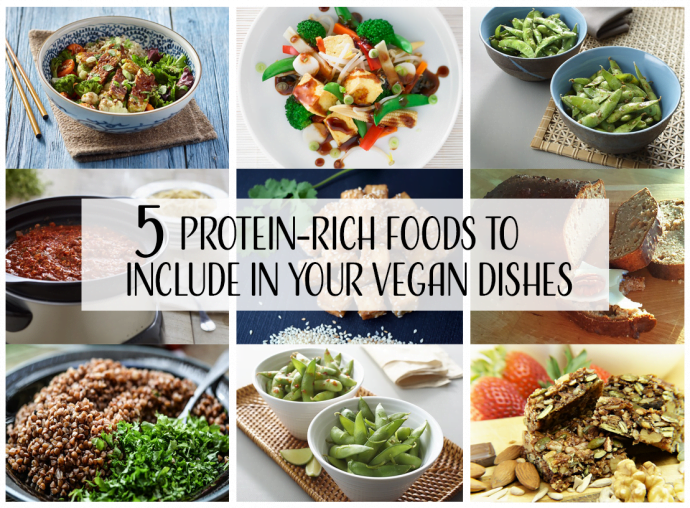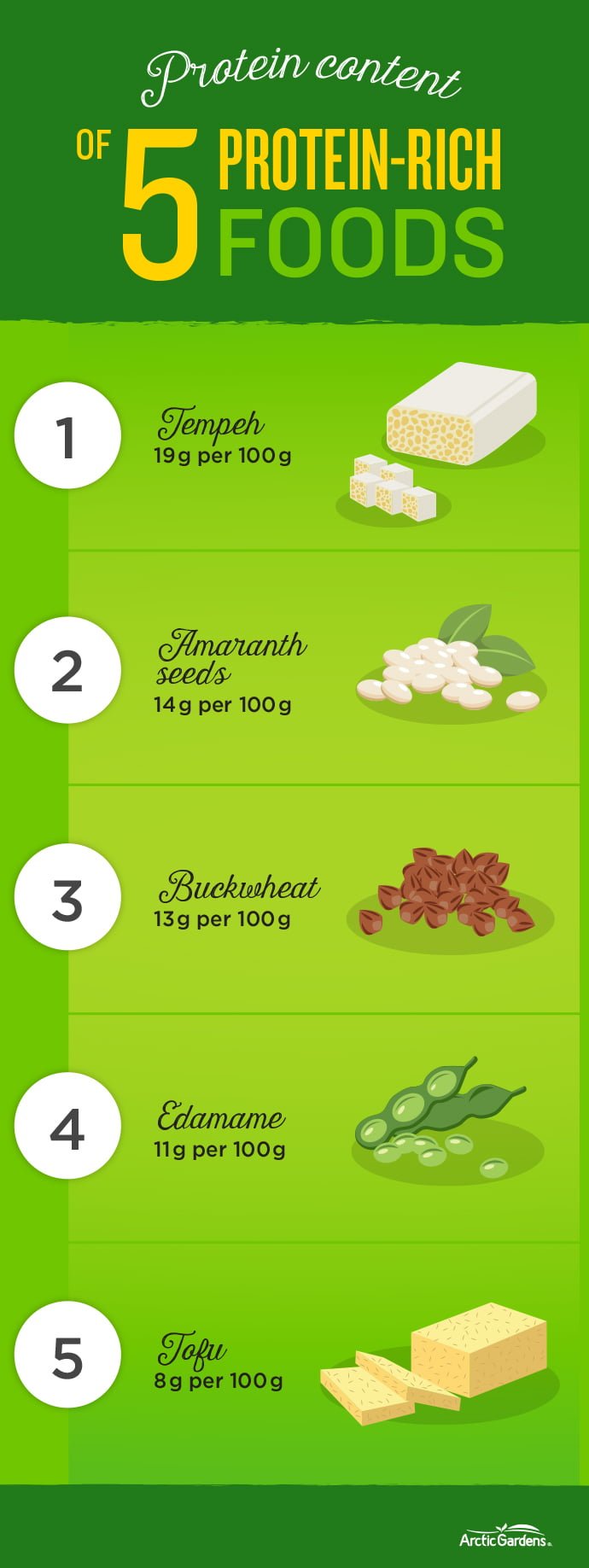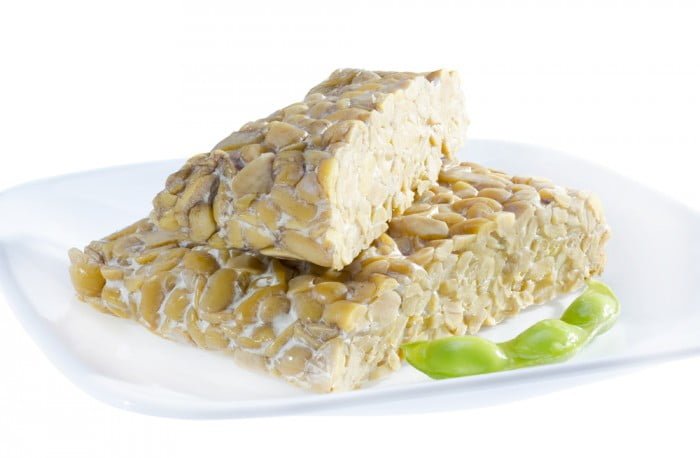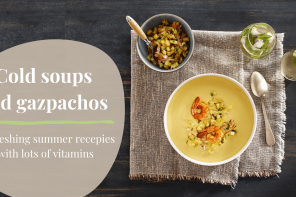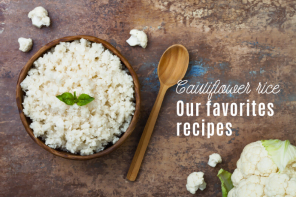5 vegetable proteins for your recipes!
Have you ever thought you’d like to eat less meat, but didn’t know how? Replacing the meat in recipes with vegetable proteins is not always easy, but when we learn how to cook certain foods, we can make vegetarian dishes in no time.
Vegan diet
A vegan diet excludes all animal-source products. Unlike vegetarians, who only eliminate meat from animals and fish, vegans exclude all products that come from animals, like milk, eggs and wool. For complete nutrition, therefore, vegans have to get some of their essential nutrients, like proteins, from sources other than meat. For people who want to rethink what they eat by consuming less meat, there are many vegetable proteins that can replace meat in recipes. They deserve some recognition.
Useful proteins
Proteins are critical for health. They participate in the daily renewal of our skin, nails, hair and muscle tissue. They also play a role in how the body works, particularly in defending against disease.
Amount of protein required
Protein’s importance can’t be denied. Everyone’s needs differ, however, and needs vary according to weight. To find out how much protein you need, multiply your weight in kilos by 0.8 g. A man who weighs about 75 kilos (one pound = 0.453592 kg) should eat about 60 g of protein a day.
Vegetable proteins
Although a vegan diet rules out animal proteins, some vegetable proteins are excellent options for giving your body the amount of protein it needs (check out our article to know more). Here are our top 5 most versatile vegetable proteins you can start including in your recipes today.
1. Tempeh
What is tempeh?
Originally from Indonesia, tempeh is a vegetable protein based on fermented whole soybeans. To make tempeh, powdered mushroom is added to blanched soybeans, making them swell. Twenty-five hours later, the beans have become tempeh.
Like tofu, tempeh can replace animal protein in recipes. However, some people think it’s a lot tastier than tofu. In fact, the scent of tempeh is reminiscent of nuts, mushrooms, yeast and, sometimes, even meat.
Tempeh looks a lot like tofu, and is primarily sold in blocks. However, it is darker in colour, and the soybeans are visible. Before cooking, tempeh can be cubed, sliced or even ground. Its texture is more granular, similar to the texture of meat.
For more about tempeh’s origins and characteristics, see our post Discovering tempeh.
How to cook tempeh
Now that you know more about tempeh, it’s time to learn how to cook it.
Cooking tempeh

There are several ways to cook tempeh. You can boil it, marinate it, sauté it in a frying pan, grill it, bake it, or simmer it. For more about these methods, see our post on the subject. However, the most versatile way is to grill it on the barbecue or in a pan. This keeps the tempeh tender on the inside, but makes it crunchy on the outside.
Tempeh marinates very well. Before grilling, you can marinate it overnight to enhance the flavour. Even an hour in marinade does a lot. Tempeh’s subtle flavour blends perfectly with other ingredients. So give it some character by combining it with your favourite flavours: nut butter, spices, ginger, coconut milk, soy sauce, maple syrup, rice vinegar, etc. Use your imagination. The first thing to do is make the marinade. Then slice the tempeh and place the slices in a large container. Pour the marinade over it until it completely covers the tempeh. Marinate for the desired amount of time, then drain the tempeh in a sieve, and add it to your recipe.
Once it is cooked with the selected method, you can use tempeh in a variety of ways.
Different ways to use tempeh
Cubed
Cut the tempeh into small cubes and put it in stir fries, meals in a bowl, soups, kebabs and salads to add an excellent source of vegetable proteins to your recipes. A bonus, this vegetable protein is easy to incorporate into recipes, because it absorbs the taste of the ingredients while providing some crunch to the final result.
Slices or strips
Sliced, tempeh can replace meat patties in burgers and sandwiches, and can also be a featured side dish.
Ground or crumbled
Ground, tempeh is an all-purpose ingredient. It looks similar to ground beef, so it can easily be used in your chili, spaghetti sauce, etc. Don’t worry: you don’t need a grinder to make these recipes. You can just grate the tempeh using a cheese grater. The outcome will be just as good.
2. Amaranth seeds

What are amaranth seeds?
Amaranth seeds come from the amaranth plant, which is from Central America. It is primarily valued for its small seeds, which are eaten like grain, and its leaves, which are eaten like spinach.
Amaranth seeds are similar to quinoa and play approximately the same role in the diet. Although amaranth looks like a grain plant, it is part of the Aramanthaceae family, and is a seed. Amaranth seeds are naturally gluten-free, and have better nutritional properties than grains, particularly in terms of iron, protein, magnesium and calcium. They are also very low in fat.
How to add amaranth to your dishes
Amaranth seeds are even smaller than quinoa. Cooked, they have a very fine texture and taste like hazelnuts. They can be used to thicken soups, stuff vegetables, or make dessert. Served with fruit, cooked amaranth can also be eaten for breakfast, like porridge.
Raw amaranth seeds
Raw amaranth seeds can be added to salad, yogurt, smoothies, etc. Crunchy and light-tasting, they are real chameleons of the vegetable proteins. Simply sprinkle raw amaranth seeds on top of this delicious green smoothie, Asian stir fry or even this chick pea salad to add a little crunch.
Cooked amaranth seed
 Photo : Association Manger Santé Bio
Photo : Association Manger Santé Bio
To cook them, wash the seeds then soak them in twice as much water for 20 to 30 minutes. They must be cooked over low heat. Stir occasionally to keep the seeds from clumping. This yields slightly sticky grains that can be used in many dishes and desserts. Try out this recipe for amaranth tabbouleh to discover the benefits of this vegetable protein.
Did you know that amaranth can also be popped? Simply heat the seeds in a covered pot and wait for them to burst, just like corn. It’s a brand new way to make popcorn. You can use popped amaranth seeds in desserts, for example in theses amaranth hemp protein poppers and pumpkin bread recipes.
Amaranth floor
Looking for a healthy gluten-free flour to use in your recipes? Try amaranth flour, which is made from ground amaranth seeds. The white flour has a slightly nutty taste and can be used in your favourite cakes.
3. Buckwheat

What is buckwheat?
Buckwheat is a flowering plant in the Polygonaceae family. It is grown for its seeds, which are eaten like grains. Like amaranth, buckwheat is gluten-free and can replace grains in many recipes. Its taste is similar to that of hazelnuts.
How to add buckwheat to your dishes
Buckwheat can be used in cooking in three different forms: seeds, flour and flakes.
Buckwheat seeds
Commercially shelled or roasted, buckwheat seeds can be used like rice and quinoa. They can be added to many recipes, such as buckwheat chia porridge and buckwheat granola bars.
You can also sprout raw buckwheat seeds, which increases their nutritional value. To sprout them, soak them in water for about two hours, then rinse them and place them in a glass jar. Before eating them, rinse them twice a day for two days, and stir them regularly. Enjoy them raw or cooked.
Did you know you can make your own tea using buckwheat seeds? Simply steep roasted buckwheat seeds for 5 to 10 minutes. Result: sobacha, a Japanese tea that contains no theine.
Buckwheat flour
Like amaranth, you can also buy buckwheat flour, which is made from the hulled buckwheat seed. You can make buckwheat bread by combining the buckwheat flour with other kinds of flour (white flour, rice flour, whole-wheat flour, etc.).
Feel like a bowl of protein-packed soba noodles? With buckwheat flour, you can also make your own soba noodles. Reinvent your classic recipes using this protein flour. You can use it in pastry dough, cakes, waffles, and so on.
Buckwheat flakes
Buckwheat flakes can replace oats in granola bars, porridge, cookies and cakes.
Cooking buckwheat
Select how much buckwheat you need. Note that one cup of raw buckwheat will yield about four cups cooked. Boil the buckwheat in twice the volume of water. Some people cook buckwheat for up to 30 minutes, but we recommend boiling it for just 5 minutes, for a less pasty texture. You can always adjust the time to get the texture you want.
4. Edamame

Photo : Organic Facts
What is edamame?
Edamame is a soybean that is picked early. Although North Americans are just starting to grow edamame and add it to our diets, it has been grown for thousands of years in Asia. They look similar to green peas, and can easily be confused with them. However, edamame is part of the legume family, so it has excellent protein content.
How to add edamame to your dishes

You can eat whole edamame in the shell, or open the shell and take out the beans inside. Both do very well in recipes. Edamame can also be eaten on its own, seasoned or plain.
Whole edamame
To serve whole edamame as an appetizer, side dish, or use it as an ingredient, you have to blanch the beans in their shells. To blanch them, simply plunge the edamame in boiling water for one minute, then chill in cold water, and drain. They are ready to eat plain, with a little salt or other seasoning, or add to your recipes. Try our recipes for spicy edamame, lime edamame, ginger and soya edamame and sesame edamame today.
You can also buy edamame already blanched, like Arctic Gardens’ frozen edamame. To enjoy, boil six cups of water, add the edamame and a little salt, cook four to six minutes, drain and serve.
Edamame beans
To remove the beans from their shells, bring a pot of water to a boil. Soften the edamame by soaking them in the water for about five minutes. Then drain them and remove the shells. Edamame beans can be eaten as they are, as nibbles. Like whole edamame, they can also be seasoned or added as vegetable proteins to recipes, especially salads. Here are a few ideas for recipes to use in your next menu.
5. Tofu

Photo : Thespruce
What is tofu?
As we mentioned earlier, tofu is, in a way, tempeh’s older sibling. The two are very similar and both are excellent vegetable proteins. Tofu, which originates in China, results from coagulating soy milk with an agent such as salt or an acid. In other words, making tofu is similar to making some cheeses, which is why tofu is also known as “bean curd.”
Its taste, which is more neutral and subtle than tempeh’s, makes this vegetable protein a real chameleon. Its taste and aroma may seem bland at first glance, but its porosity means it absorbs the flavours of the foods it is cooked with. Liquids seep into the tiny invisible holes in the tofu, giving it the taste that suits our needs. That is why tofu can even be found in desserts.
How to add tofu to your dishes
Available in a variety of forms on the market, tofu can be included in many recipes, whether for breakfast, lunch, supper, as a snack or even dessert. Each kind of tofu has its own specialty.
Types of tofu

It is now possible to find a variety of kinds of tofu at specialty stores: smoked tofu, fried tofu, lacto-fermented tofu, etc. However, many supermarkets offer different textures of tofu, from soft to extra-firm. Flavoured tofus are also available, with flavours ranging from olive, curry or pesto to tamari or herb.
Of course, each variety of tofu has different characteristics; tofu must be selected based on the recipe it is going in.
Preparing tofu
Do you find that tofu tastes too bland? Before you cook it, zip it up with your favourite flavours. You can use one of these two very easy methods:
1. Marinade:
Like tempeh, you can marinate tofu in a liquid marinade that suits your needs. Create a Mexican marinade to use tofu in fajitas, a Mediterranean marinade if you’re using tofu in salad, or an Asian-style marinade, to stir fry it. Tofu has to marinate for at least an hour to absorb any flavour. We recommend preparing in advance and marinating it overnight.
Need some inspiration? See these ideas for marinades that work for your future dishes.
2. Coating:
Coat your tofu in spices or corn starch to achieve a unique flavour and texture.
Spice blends:
Coat your tofu in a blend of spices or spice paste to give it an exquisite flavour. Don’t overdo it, however, because tofu absorbs flavours very quickly. You can then pan fry the tofu or grill it in the oven before using it in your dishes.
Corn starch:
For crispy mouthfuls of tofu, coat the cut tofu in corn starch, then fry it in a little olive oil: it’s perfect for Thai dishes. To get this crunchy texture, you can also toss the tofu in sesame seeds, chopped nuts, or breadcrumbs.
Cooking tofu

How do you cook the perfect tofu? Tofu is excellent when it is crunchy on the outside, but soft on the inside.
To get this texture, first coat the sliced or cubed tofu in corn starch, breadcrumbs, sesame seeds or chopped nuts. That will give it its crunch. Short on time? Pat the tofu dry thoroughly with a paper towel.
Then put some olive oil in a pan and add the pieces of tofu. Cook the tofu over medium-high heat three to four minutes a side without moving them, until they’re golden brown. Enjoy
Recipes made with tofu

Here are a few ideas for recipes that use tofu. The possibilities are endless, however, and you can add it to nearly all of your favourite recipes.
Slow cooker vegetarian spaghetti sauce
Cutting back on meat may seem hard, at first glance. However, there lots of kinds of vegetable proteins you can eat. You just have to know how to use them well. Are you ready to try? Please let us know which ones you like best.

